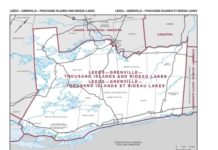There are periods in history when the speed at which events take place seems to accelerate. In a very short space of time, societies change, inventions are made which seem miraculous, and people see their lives in an entirely new way. We call these period Revolutions, because of the way in which everything is different after they have passed. The history of Canada may be considered a little lacking in revolutions to many Canadians. We didn’t have a Civil War (or so we believe), there has been no serious armed uprising against governments, more of a gradual development of a Canadian way of building a nation.
But the facts are quite different. And there was a time when the country changed so completely, so quickly, that it really was revolutionary. Think of it like this: in 1763, the King of France, in the Treaty of Paris, after two centuries of economic competition, rivalry in the fur trade, and even open warfare, withdrew from North America, defeated by the forces of the British King. In October of that year, King George III issued a Royal Proclamation, setting out the boundaries of his new dominions. This included the new Province of Quebec, along with its French population, known to the British as the Canadians. This was a revolution. West and south of the Ottawa River was Indian Territory, where white people were forbidden to settle or buy lands. The only Europeans in that vast territory were a few scattered settlements around trading and military posts at Detroit, Niagara, Catarqui (later Kingston), and Michilmackinac. But, just twenty years later, in 1783, in another Treaty of Paris, the results of another Revolution were enshrined, as the new United States of America were recognised by the same King George III to be an independent nation, and Britain was left with just the territory it had assumed from the French in 1763. The Americans of the Thirteen Colonies had the vital support of the French in their struggle with Britain, a nice irony. Even more ironic, within ten years of the successful American Revolution, the French had followed suit and engaged in their own Revolution, leading to the abolition of the monarchy and the execution of the King in 1793. The American Revolution was to have the major role in establishing a new English-speaking population in Quebec, which had by now extended its borders. In twenty years, it had grown to include all the lands from Gaspé to west of the Great Lakes as far as the Mississippi River. Now it was all that was left of British North America.
Then, yet another revolution, this one entirely constitutional: in 1791, within ten years of the American Revolution, the Province of Quebec was divided into two. The old New France became Lower Canada, and a new Province began at the Ottawa River and ran west to an undefined border. Upper Canada was established directly as a result of the American Revolution, its new population of around 3,000 men, women, and children occupying a narrow strip of land on the north bank of the St. Lawrence River between the Ottawa and the Bay of Quinté.
Just thirty years after the departure of the French King, a new province was established. That period is short and crowded with change. It is the same time frame as from 1991 to today. Nor would the pace of revolutionary change stop there. Just 100 years after the 1763 Treaty of Paris, what one of its Founders called A New Nation, would be born at a conference in Quebec, and become the Dominion of Canada in 1867. And that province which arose in 1791 would become the Province of Ontario.
That revolutionary century, from 1763 to 1867, also involved another war with the Americans in what has become known as the Civil War of 1812. Around 50 years after the Royal Proclamation of 1763 had proudly laid out the new territories of the British King in North America, and twenty years after refugees from the American Revolution settled in Upper Canada, they were at war again. In the late 1830’s, internal conflict led to Rebellions in both Upper and Lower Canada, leading to the reunion of the two provinces as the Province of Canada.
And it was the tensions and economic stagnation that came from that union of the provinces that inspired politicians in Canada and the Maritimes to look for new ways to structure their societies. So another revolution took place, as four of the British North American provinces agreed to join the new nation: Confederation was the end result of that Century of Revolution in British North America.
Canadian history has not always (if ever) been the calm and rather boring story that so many thought during school history lessons. More revolutionary times were to follow 1867. But the early period, those first decades, were astonishing in the speed at which change took place. And while these changes were happening, there was so much more going on to bring them about in the first place. And in this year of 2021, 230 years after Upper Canada was almost literally carved out of the land, it is worth looking back over those times and the men and women who lived through them. In the next weeks, we will get to know them and their times. Haldimand and Dorchester, the Swiss and the Irishman; John Graves Simcoe, who dreamed of a British aristocracy to rule the new province; and men like Peter Drummond and the Fraser brothers, who would move from being homeless refugees from revolution to be leaders and land owners of much of the new land. The governors, settlers, farmers and entrepreneurs who took part in the making of a Province.








